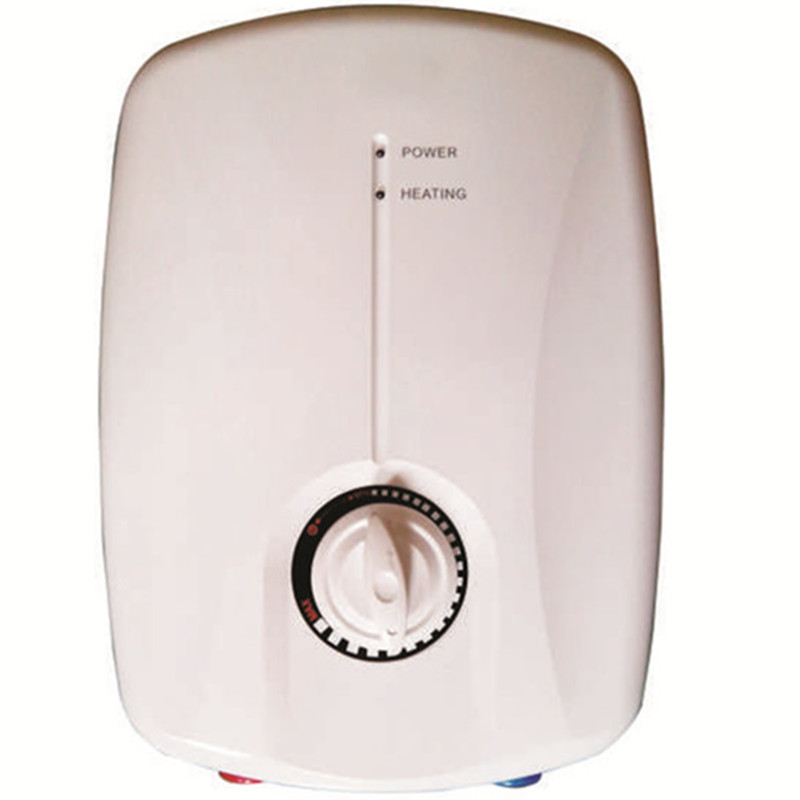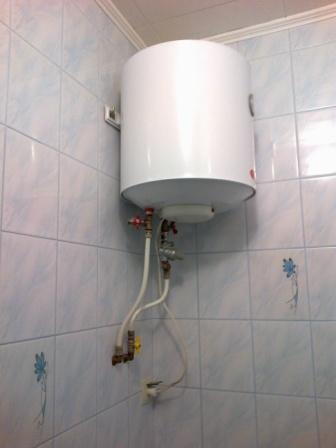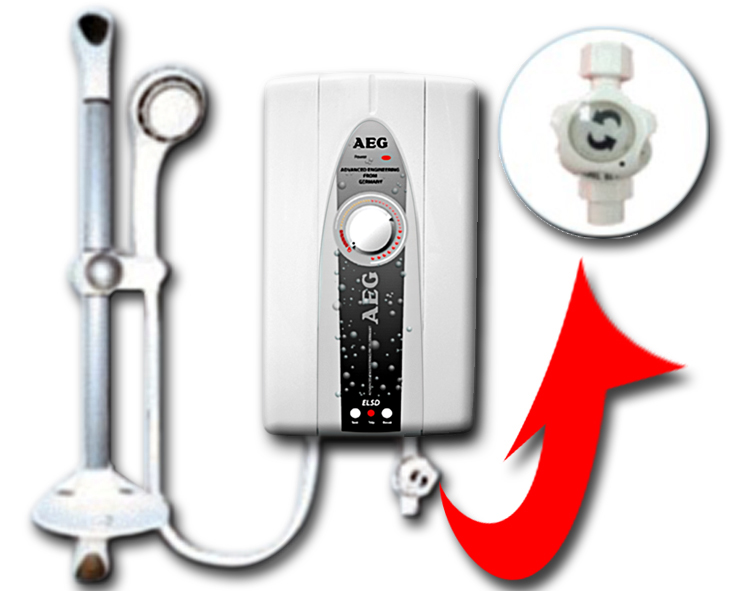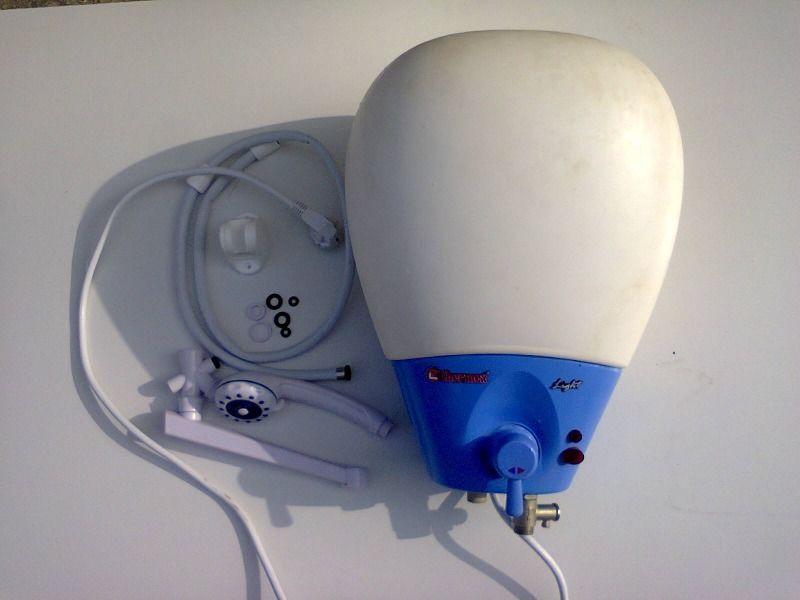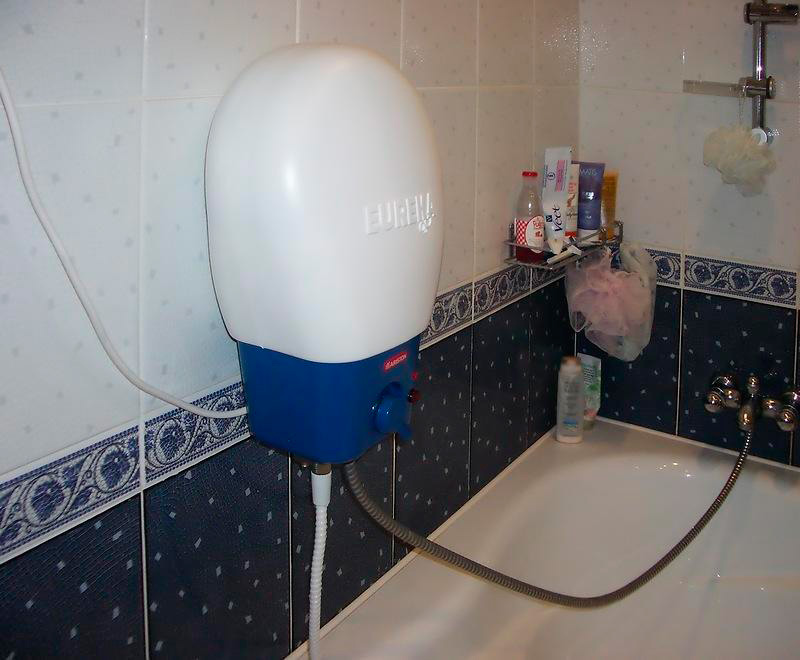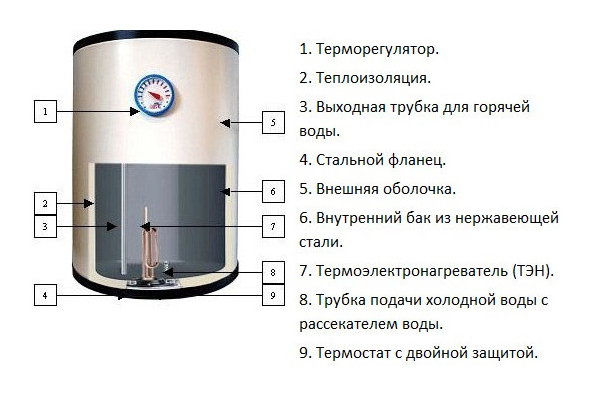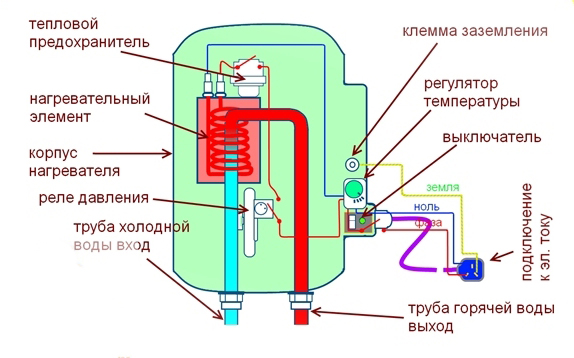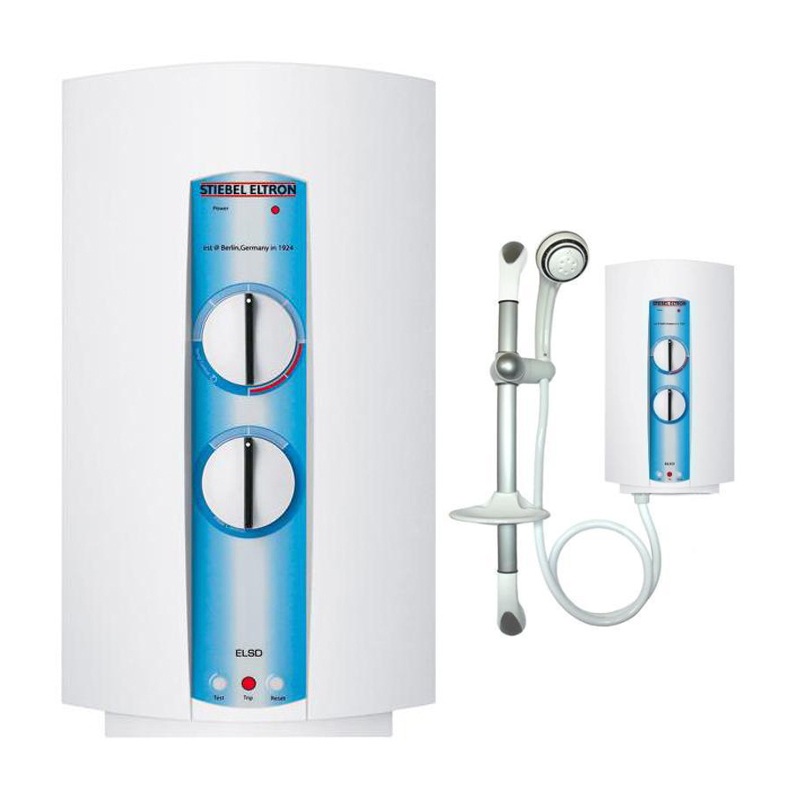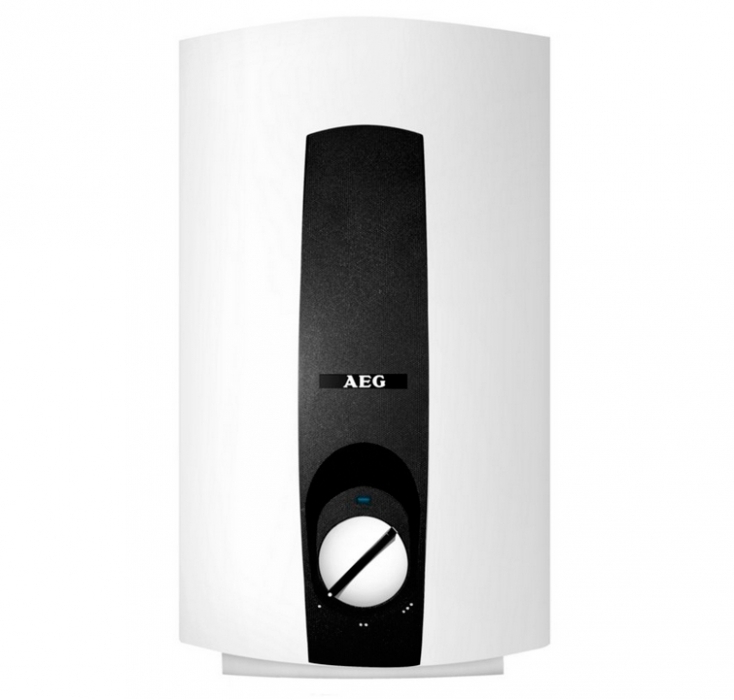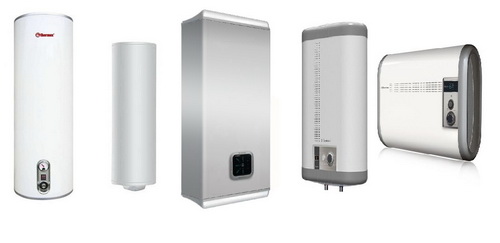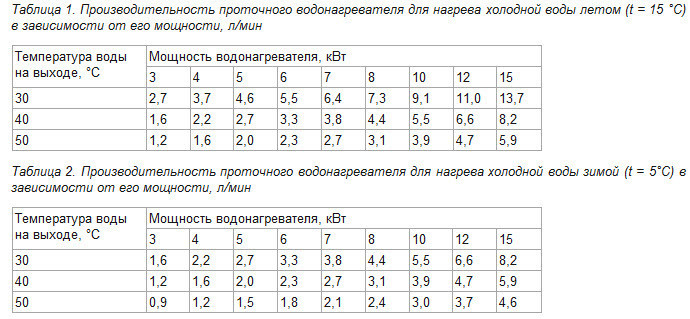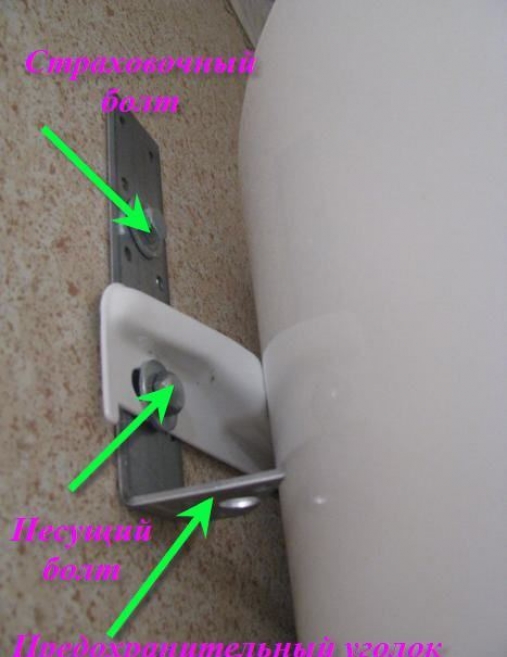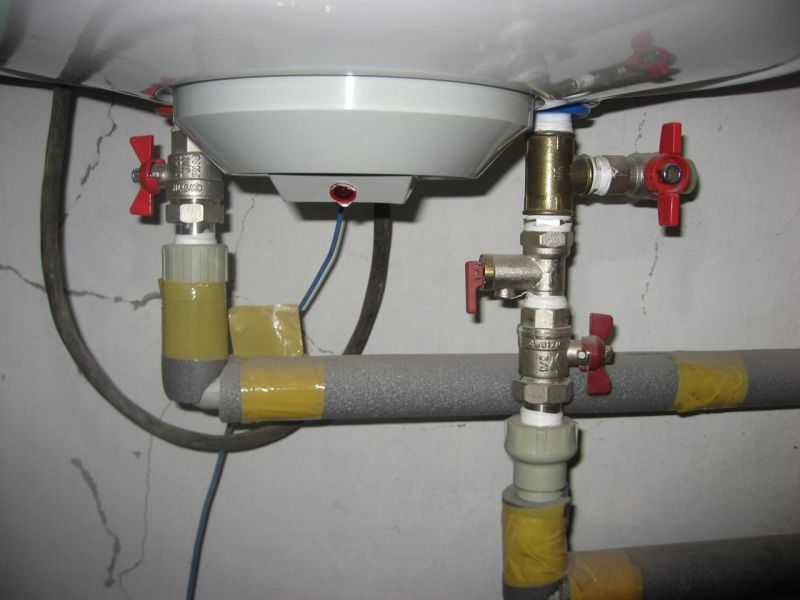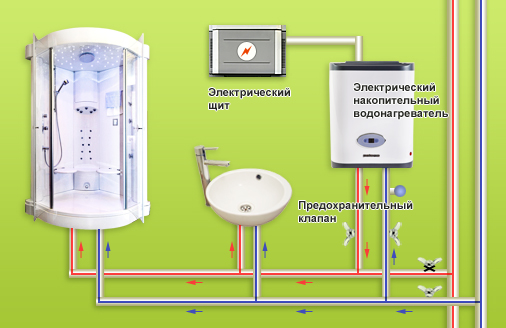Sections of the site
Editor's Choice:
- How to unlock ariston washing machine
- Pros and cons of LED lighting
- Pulse relay: device and connection
- How to calculate the illumination of a room with LED lamps?
- Plastic box - do-it-yourself aesthetic view of electrical wiring
- Electricity consumption of a warm floor: electric and film
- Installing a pump in a well: how to properly install pumping equipment
- Electrician Toolkit Overview
- How to choose a water heater: the most complete list of evaluation criteria
- 1 acoustics on the example of Sven SPS-860 and Realtek ALC889 codec
Advertising
| Rules for choosing electric storage water heaters |
|
Recently, electric storage water heaters have become increasingly popular, so the question of choosing such a device is considered quite relevant. So that the questions that arise do not lead you to a dead end, you need to know the design features and the principle of its operation, this will help you choose the right model that meets your requirements. Types of heatersAll water heaters can be divided into two categories:
Electric Compared to the electric type, gas water heaters are much more economical from a financial point of view, largely due to the low cost of gas. And in terms of equipment installation, electric heaters are much simpler. There is no need to draw up a project for the placement of the device and obtain special permission for its installation. In addition, all water heaters differ in the principle of operation, they can be:
Cumulative
flowing
Flow-accumulative According to external data, these structures are similar to each other. Storage and flow type designs are quite well known, in contrast to flow-storage devices. Flow-accumulating devicesWhat attracts flow-storage devices? This boiler design is considered universal, due to the combination of the characteristics of two devices. Among the advantages of a device with a flow-accumulating system include:
The principle of operation of the storage deviceThe principle of operation of such a unit is quite simple, it is a kind of thermos containing a heating element. After heating the water, its temperature is maintained according to the set mode, so once you adjust the flow, you can safely swim and not be afraid of unpleasant surprises. The main elements of such a device include:
Scheme of the storage type water heater The principle of operation of the flow deviceFlow devices include a compact boiler that is capable of heating water in a short period of time. Cold water that enters the device instantly heats up to 45–60 degrees after passing through the heating element. Fast heating is possible due to the high power of the heating element. Among the advantages of flow type equipment are:
There are also disadvantages:
If you still doubt what type your boiler should be, flow, storage or flow-accumulative, then view the further information that will help you decide on the selection of a model.
Scheme of the instantaneous water heater device ClassificationElectric water heaters can be:
Non-pressure
pressure head In simple terms, a non-pressure type boiler resembles boiling an electric kettle. The incoming water is heated and consumed. The advantage of this design can be considered simple installation and low cost. As for the cons, it’s a little more complicated here, such heaters require constant monitoring of the water level in the tank and the absence of pressure, since the flow occurs by gravity. A pressure-type boiler of heaters is much better, since the change of water, as it decreases, occurs automatically, cold water enters, and heated water comes out. If you are choosing equipment for giving, then it is quite possible to use the first option of the heater, since its work will be directed to one type of consumption, for example, to a shower. Advantages and disadvantagesFeatures of work, as well as the positive and negative sides of these devices, will help you decide on the choice of model for your use. The advantages of electric storage water heaters include:
Criterias of choiceElectric storage water heaters may have some differences based on their performance, used as criteria for selecting equipment. But when comparing the technical characteristics of models, do not forget to compare them with your requests. VolumeThe size of the tank can vary from 10 to 200 liters, when purchasing equipment with a large volume, it is necessary to remember its expediency. In order to determine the volume of the device you need, you need to know the approximate daily allowances per person. On average, these indicators look like this:
The shape of the model and its executionAccumulative electric heaters are made in various versions. The main criterion for selection is the form and method of placement of the device, relative to your home and its free space. According to the method of fastening, the heaters are divided:
According to the method of installation, heaters are divided into three categories:
According to the cross-sectional shape, heaters are:
Based on all the parameters, the main criterion is the location of the device. When choosing vertical models, you will always get faster heating. Therefore, this design is always in the first place, you need to choose a horizontal arrangement only when there is nowhere to place a vertical tank.
PowerThe power of any model depends on its volume. Naturally, for a tank of 10 liters, less energy will be needed. If different models have the same volume but differ in power, the time to heat up is usually significantly different. For example, a water heater with a power of 2.5–3 kW will heat 150 liters in 3–4 hours, to a temperature of 15–65 degrees.
Power Internal coatingThe coating inside plays an equally important role in terms of efficiency and durability of the structure. The ability of the device to function without repair and maintenance depends on the quality of the coating.
Visually, it is very difficult to determine this, in appearance it is an ordinary surface containing small microcracks, which will subsequently lead to the destruction of this layer. Therefore, such water heaters do not like temperatures above 60 ° C.
Installation of equipmentInstalling an electric storage water heater or boiler is quite simple. The whole process can be divided into three stages:
Mounting the heater on the wall
Connecting taps to the boiler
General requirements for the installation of equipmentThere are a number of installation requirements:
|
New
- Tonsillitis in adults - what is it, symptoms and treatment, causes, photos and first signs What is throat tonsillitis
- Diseases of the male genital area Chronic inflammatory diseases of the female genital area
- Signs of gastric and duodenal ulcers
- Prostate cancer of the fourth stage: the possibilities of modern medicine
- What is useful lemon water for weight loss, face, hair
- How to talk to a girl and not seem boring What is the best way to communicate with girls
- Foods rich in zinc
- Is the treadmill an indispensable exercise machine or just a complicated toy?
- Kievan Rus: education and history
- What vitamins are good for facial skin?

